An economic crisis grasped the world in 1929. It made fashion a luxury. Clothes were being made of artificial materials to cut the cost and make them affordable to people—economic depression-induced creativity and innovation in fashion. Many fashion trends ruled the 1930s. 1930s fashion designers made outfits fashionable yet straightforward. As a result, despite the poor economy, people wore stylish clothes. In the 1930s, fashion trends were still popular. The 1930s fashion trends gave birth to many modern styles.
1930s Fashion Trends
A lot changed in fashion in the 1930s. Humanmade fabrics and zippers were highly used instead of natural fibers and buttons. 1920s boyish look of women disappeared in the 1930s. 1930s women fashion included fitted hips, high waist, high neckline, longer mid-calf or floor-length hemline, and wide shoulders. 1930s style had variations in patterns. The old simple and clean shape patterns were replaced by more complex models like floral, dots, animals, and even cars. Accessories like gloves, hats, and jewelry also gained popularity in this decade. Many fashion designers became popular in this decade. Some of them became the face of fashion at that time. This decade is often termed as the decade of design. Hollywood was also responsible for new fashion ideas. Various fashion trends ruled the hearts throughout this decade. Some of them are-
- Mid-length bias-cut dresses
- High waisted sailor pants and wide-leg beach pajamas
- Old Hollywood evening gowns
- Fur collar winter coats.
- Casual sports clothes
- Slouch hats, tilt hats, knit berets.
- Oxford shoes
Bias Cut Dress
Bias cut dress is considered the most fabulous fashion of the 1930s. Madeleine Vionnet invented it in the 1920s, but it became a trending fashion in the 1930s. Bias cut method is considered the sexiest and flirtatious way of wearing a silk dress. In this method, the fabric is not along the straight grain, rather at a 45-degree angle so that the fabric can hug the body of the wearer. The bias cut would reveal the natural shape of women’s bodies. It was a symbol of ultimate sex appeal. In the beginning, it was used as an evening dress, but later the bias cut was also applied to the day dresses. The bias cut dress was highly popular at that time as this dress would reveal the women’s body frame beautifully.
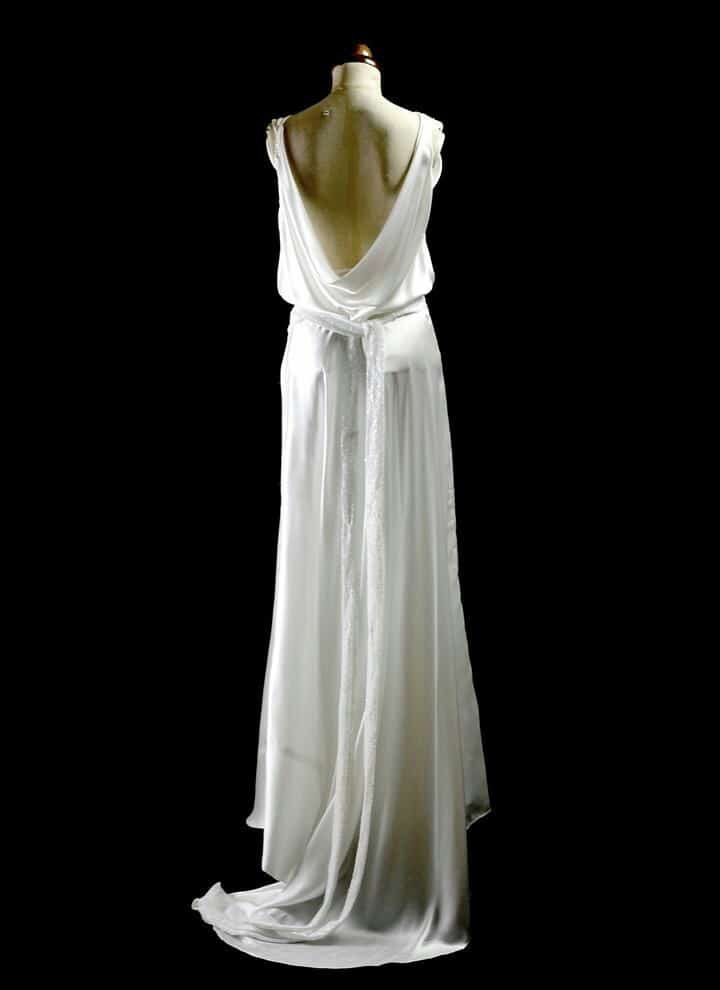
Halter Dress
The Halter dress was another 1930s trending fashion. The name of the dress came from the halterneck, a strap style in women’s clothing that runs around the back of the neck from the front. It was a backless dress that kept the shoulder blades and backside, the sensual zones of a woman body uncovered. The halter dress was made accessible by the famous fashion designer of the decade, Madeleine Vionnet, who also invented the bias cut. Now the halterneck is used in various outfits, most commonly in swimsuits, to maximize sun exposure on the back.
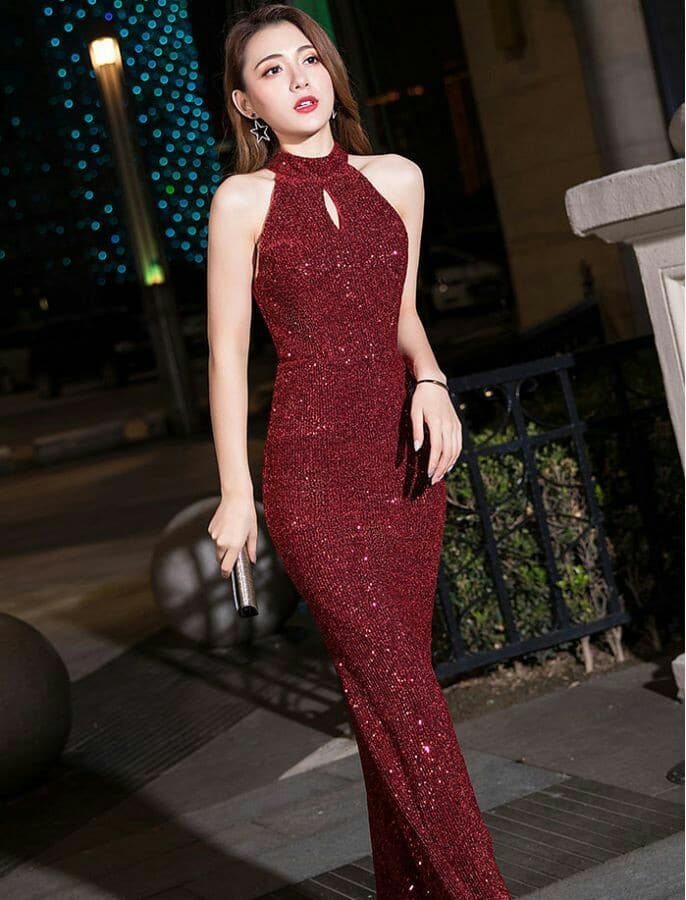
Crepe Dress
Crepe is a silk derived fabric having a crisp, crispy texture. It is thicker than woven silk but does not have the luster of the silk. These dresses were cheaper than silk ones. Crepe fabric was mainly used for making morning attire in the past, but in the 1930s, crepe daywear became a luxurious trending fashion. Today crepe is used with other types of fabric to make the garments airy.
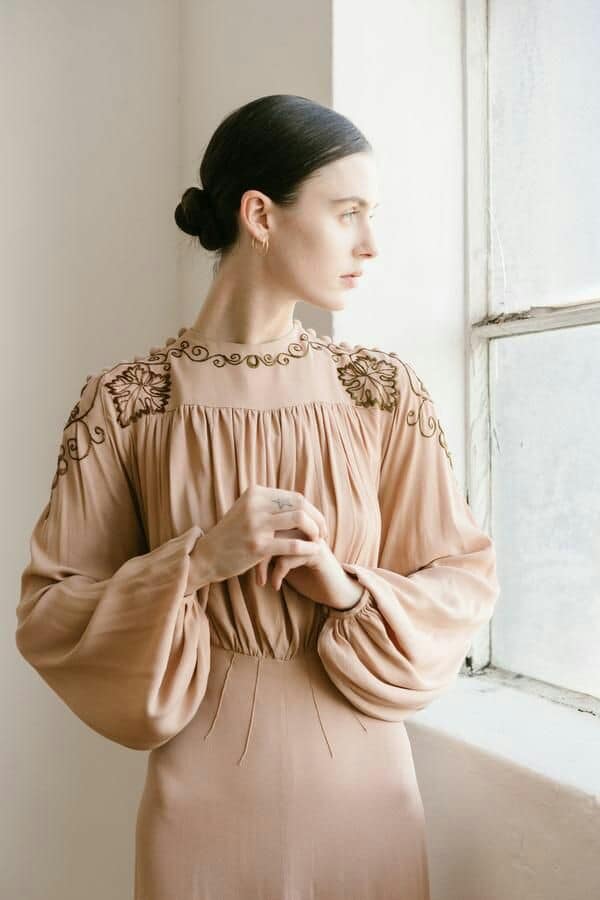
Silk Dress
Silk was considered sexy and luxurious at that time. Silk dress was worn for special occasions. It was highly popular as an evening dress. Silk dress was further popularized by Madeleine Vionnet’s bias-cut method. Women loved silk dress because of its texture. Wearing a silk dress was like wearing lingerie. Silk dress was a symbol of sex appeal as it could reveal the curves of the women’s bodies. In the next decade, during World War II use of silk in fashion was banned as silk was needed for making parachutes for the soldiers.
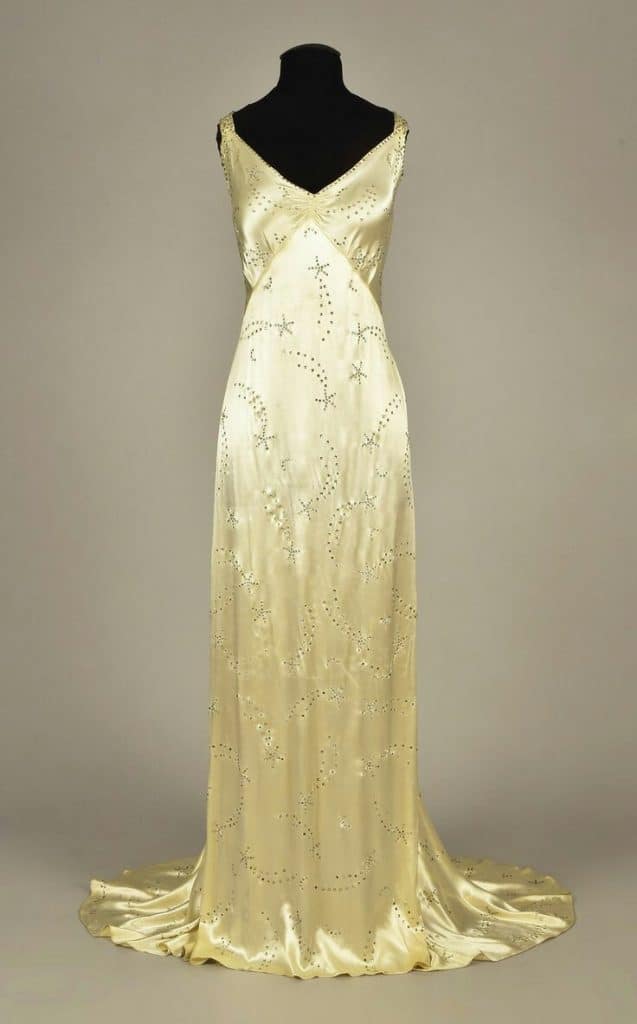
Lace Dress
The lace dress, which was highly popular in the Victorian era, maintained its popularity in the 1930s. These dresses were of different lengths. Some of them even reached the floor. Lace dress symbolized love and feminine romanticism. During the economic depression where mass people would wear dresses made of rayon and recycled feed sack materials, lace dress was the outfit of upper-class women. The degree of laces affixed to the clothing varied with occasions. An all-lace dress was usually used as evening attire. The wedding dresses would often include lace designs.
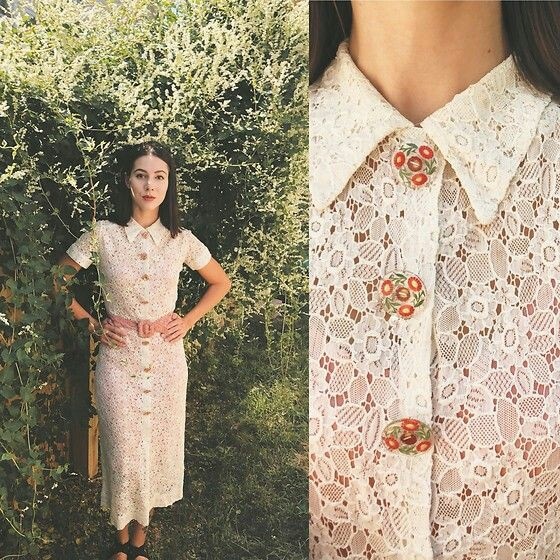
Ruffles
One of the trending 1930s fashion was the ruffles. These dresses had strips of lace, fabric, or ribbon pleated together on one edge and trimmed to the garment. Ruffles would represent delicate womanhood. They became famous as they would relieve the women from wearing uncomfortable crinoline under the hoop skirt but still give a fairy tale princess look. In the 1940s, ruffles became almost extinct as they required extra materials that would be extravagant during the war.
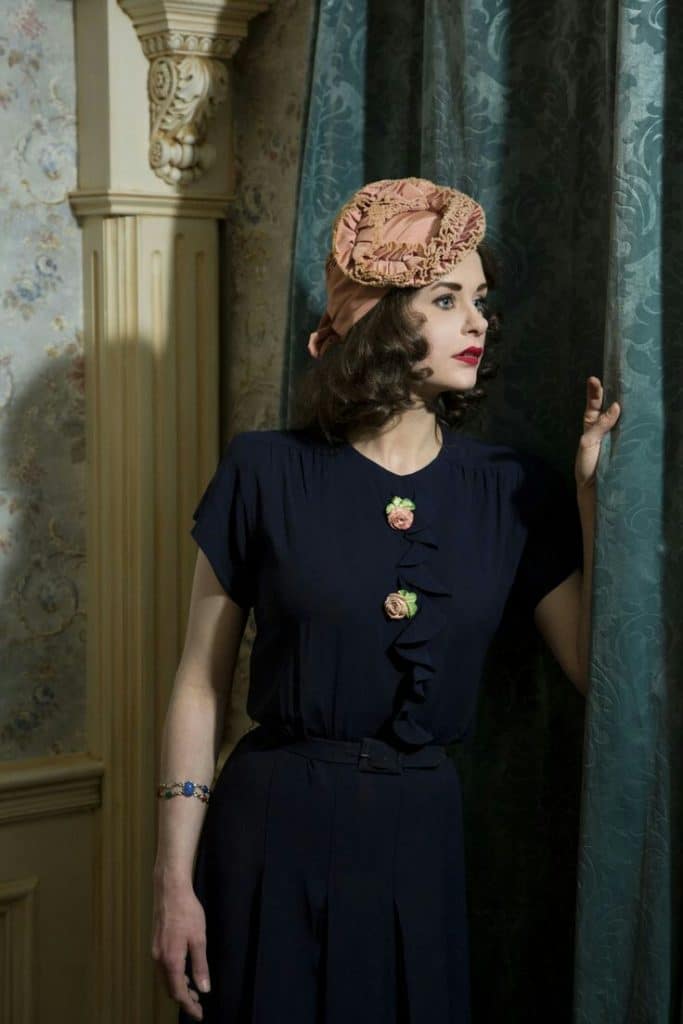
Backless Dress
In the past, only the lower-class or working women had tanned skin as they would work outside. But in the 1930s, tanning became a fashion for the first time in history. Revealing the skin glow became a sexy thing at that time. Fashion designers took the idea and designed the low back or backless dress. These dresses would show more than the shoulder blades of women. Soon these backless dresses became the trending outfits for parties to attract everyone’s attention.
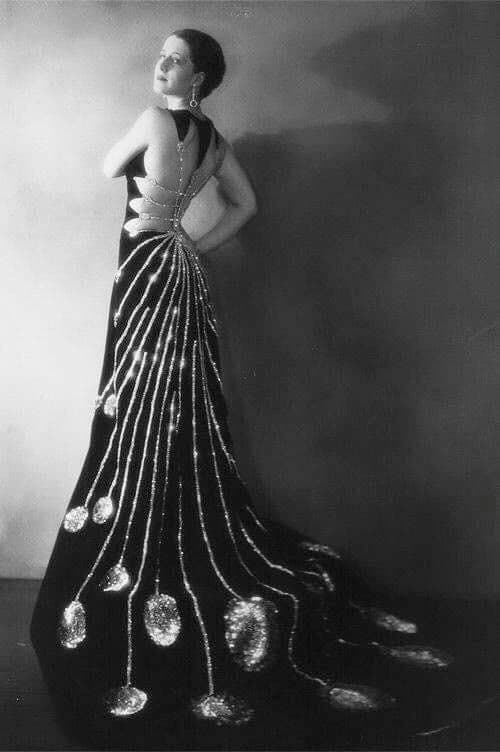
High Cap Sleeves
Robert Piguet was one of the fashion designers who promoted a romantic trend in the fashion industry. High cap sleeve or more easily called puff sleeve was one of his contributions. These sleeves were more commonly incorporated onto party dresses that often included square necklines, tiered skirts, and various designs with ribbons and laces. These sleeves were used to make the dress noticeable in a crowd. Besides, flutter sleeves that looked like small wings were also popular. Dresses with long cap sleeves would look fabulous on a tall woman with a slender neck.
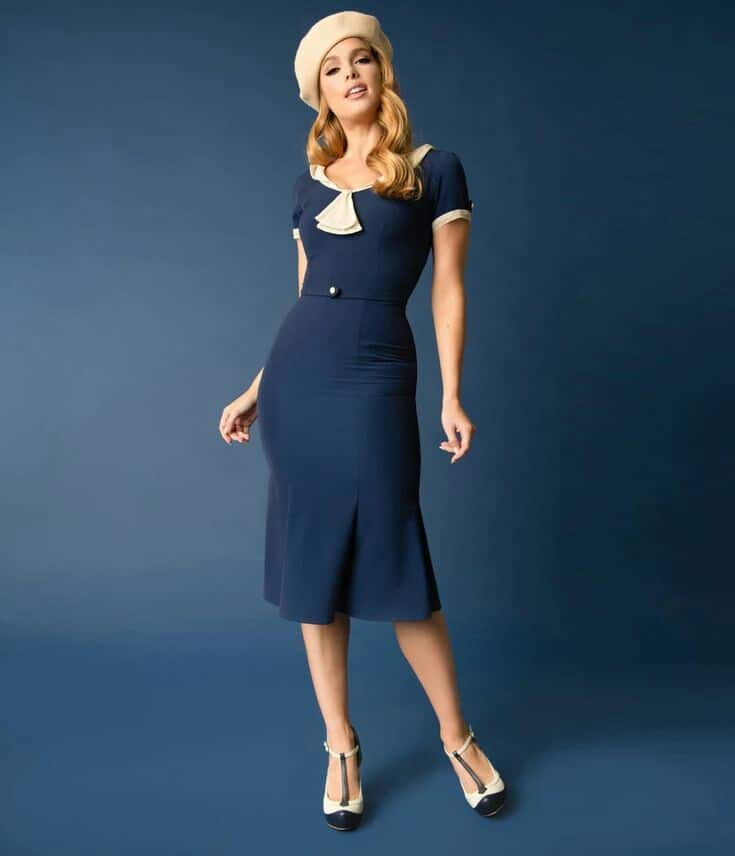
Capes and Cloaks
Capes and cloaks have been a part of the outfits since the 16th century. It was a trending fashion in the Victorian era, which remained so in the 1930s. Capes and cloaks gave people a mysterious and magical look. They were mostly worn with evening dresses. Capes and cloaks expose more of the body’s glory than jackets or coats, which was probably the reason why women loved to wear them. They were often gloriously designed to give a fabulous look.
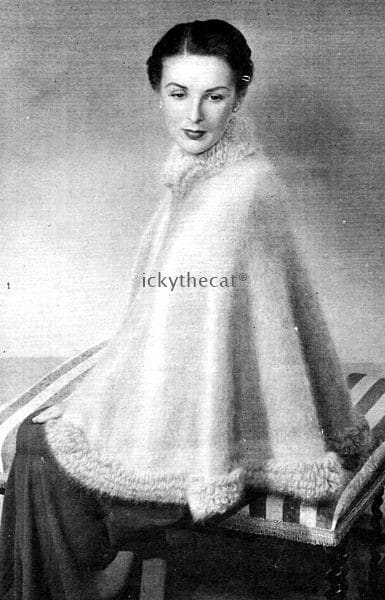
Metal Zipper
Though the zipper was invented in 1893, it was hardly used in clothing. The reason behind it may seem funny. Since it is possible to take off a dress quickly with a zipper, people at that time thought that any woman having a zipper on her dress must be sleeping around. Thanks to Elsa Schiaparelli, who made the zipper a fashion in the 1930s. She used zipper not only as a device to take off the dress quickly but also as a piece of decoration. Zippers were added either on the front or back of the dress.
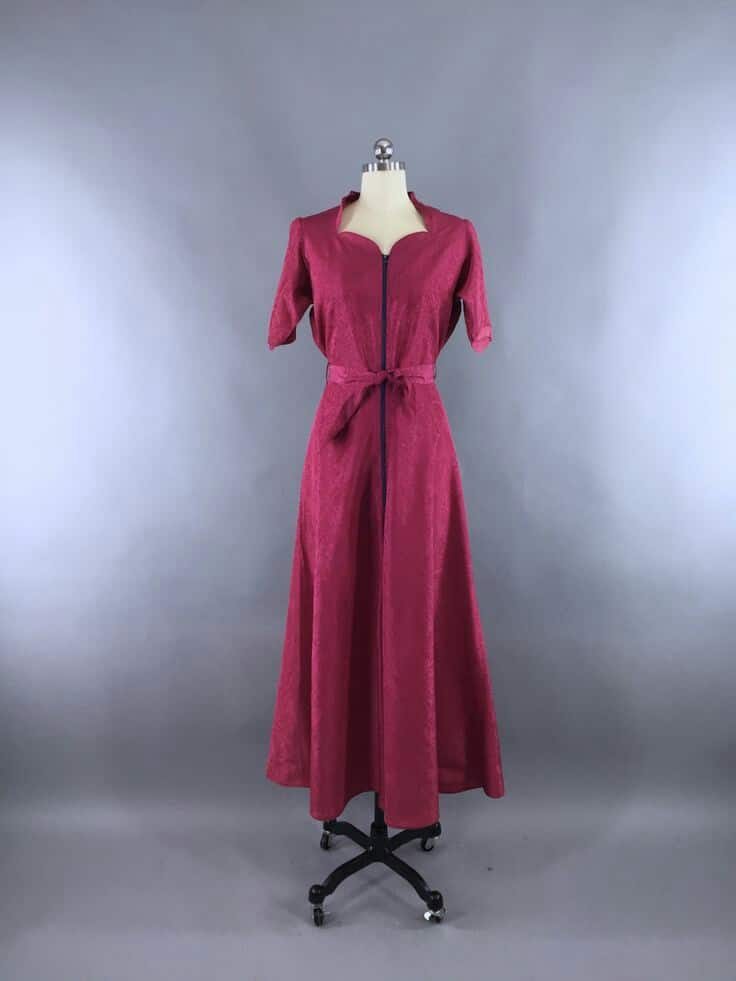
Knitwear
Coco Chanel introduced knitwear in the fashion industry in 1916. But at that time it was not so popular. In the 1930s, knitted garments became a trending fashion. They were widely used as daywear. Women loved knitted outfits as they were comfortable and did not restrict movement. However, in this decade, knitwear mostly had solid dull colors. Later in the century, knitwear of various prints and designs came into fashion.
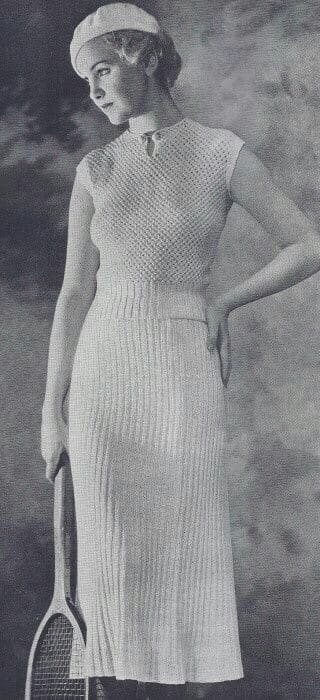
Hats
Hats were still considered as an essential part of an outfit. The hats of this decade were more stylish than before. Until this decade, the hats were gigantic. Smaller hats were the characteristic of this decade. Moreover, the hats were worn at a tilt on the head. Designers tried to give a geometric flavor to the hats’ designs so that they looked like triangles, squares, cones, diamonds, and other shapes. The famous designer of this decade, Elsa Schiaparelli, introduced ice cream cone and shoe hats.
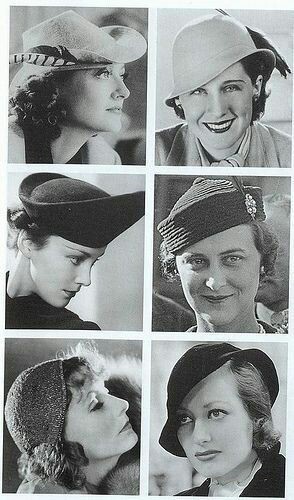
Oxford Shoe
Lace-up leather oxford shoes were the trending 1930s shoe fashion. They had a round toe and chunky heels. They were worn during the day with knit suits and crepe dresses. In this decade, the shoes were more decorative and colorful than before.
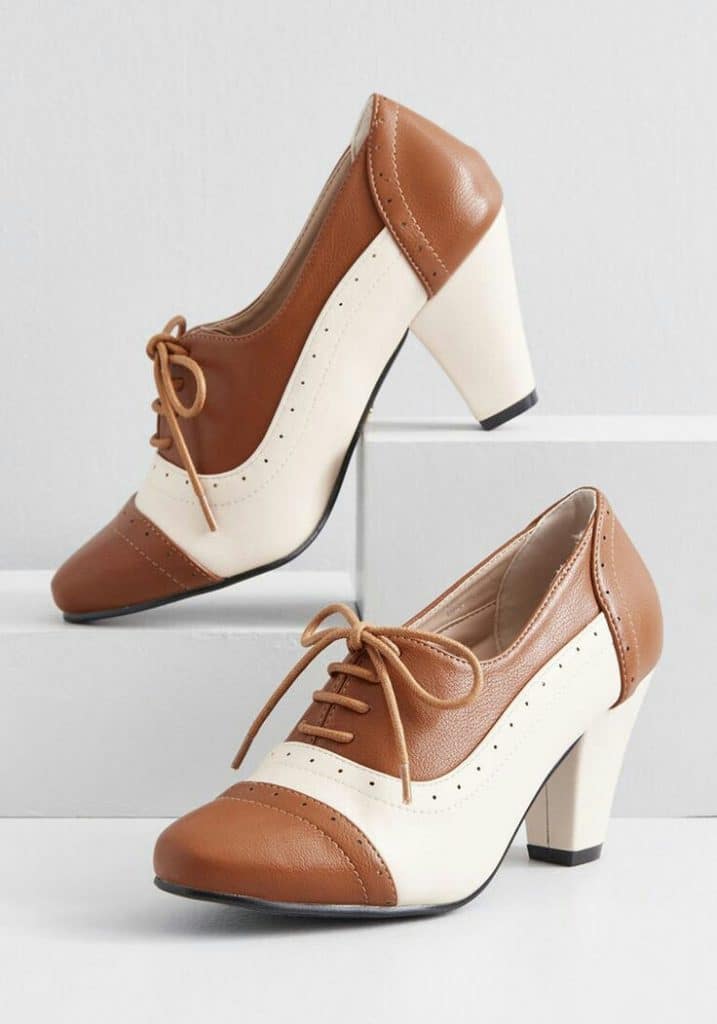
Jewelry
In this decade, the jewelry was made of cheap artificial materials instead of precious gems and stones. As a result, despite the ongoing economic depression, the jewelry industry flourished. Hollywood played an important role at this time to make many jewelry styles accessible. The jewelry was affordable to both lower and upper-class women. Women saw jewelry as an essential material to complete the costume. Geometric shapes, stars, and moons, pearls, long strands of beads, bright glass beads, etc. were some of the popular 1930s jewelry styles.
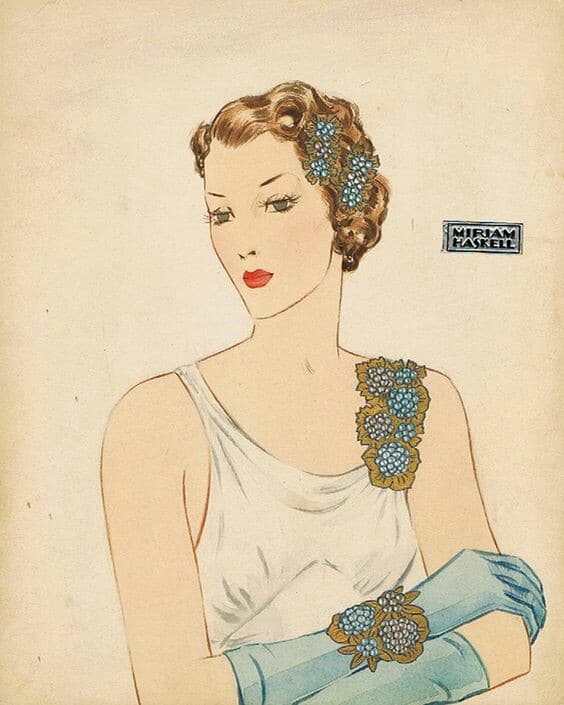
Swimsuits
Hollywood promoted the tan look in this decade. The flexibility in 1930s fashion also allowed women to have variation in swimsuits. They often consisted of woolen one piece with cotton lining, a skit over shorts, and a little belt around the waist. Gradually sunhats, sunglasses, and open-toe sandals also became parts of the swimsuits.
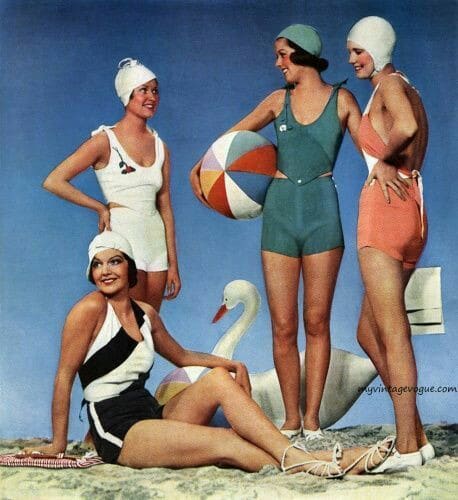
Conclusion
Despite the economic crisis, the 1930s experienced many fashion trends. Many of today’s trending fashion have their origin in the 1930s. So this decade is an important chapter for the fashion researchers. Many of the 1930s fashion trends are still popular. Keeping this in mind, today’s fashion designers have been trying to recreate the 1930s fashion with a modern touch. There are many vintage shops, both online and offline, from where you can easily buy your favorite 1930s trending outfit.

